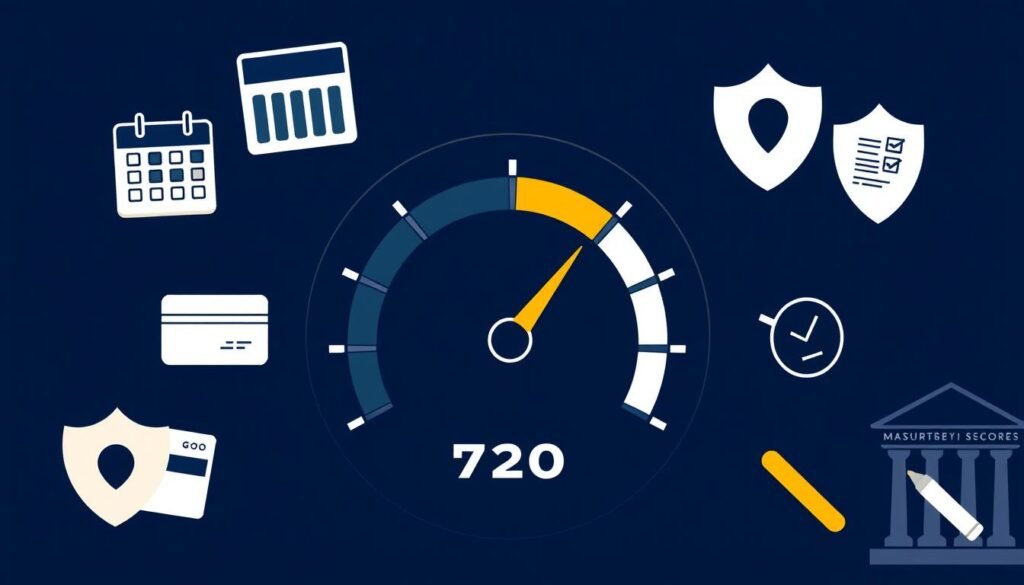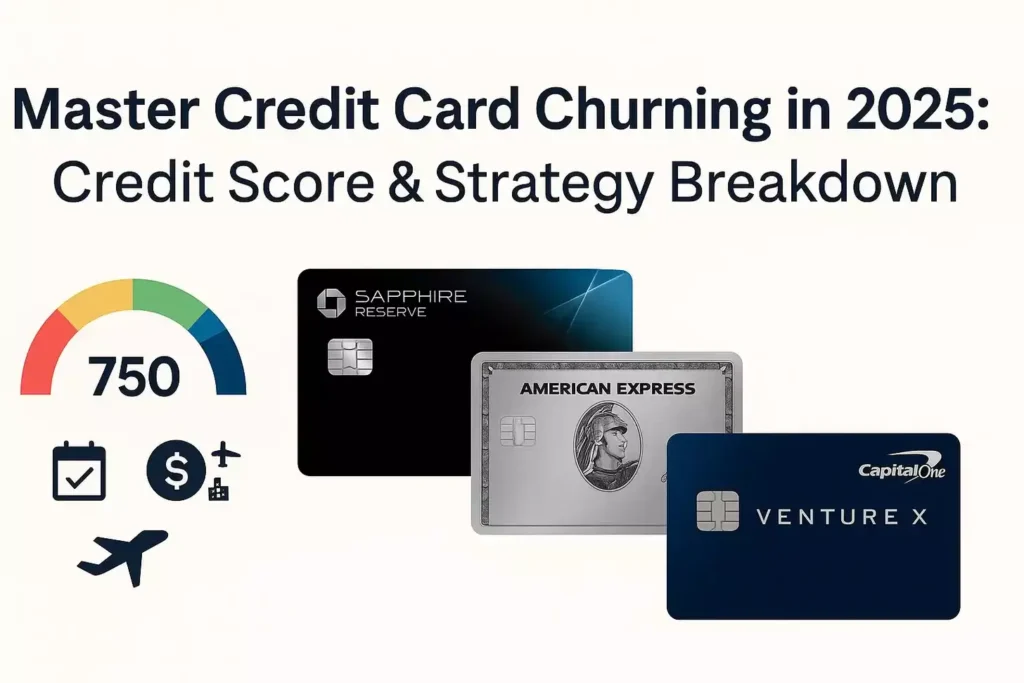Affiliate Disclosure: Travel with Plastic may earn a commission or referral bonus from some links on this site. These affiliate links help support our work and may influence the placement or promotion of certain products or services. However, our content is independently crafted to reflect honest opinions. Not all offers or products are included. There is no additional cost to users when they utilize our affiliate links.
What if you could unlock premium travel perks and cashback rewards without sacrificing your financial health? Many assume that frequent account openings hurt your financial profile, but what if we told you the right approach could actually strengthen your long-term stability while funding dream vacations?
Smart rewards strategies aren’t about reckless spending—they’re precision plays. Payment history and credit utilization ratios remain foundational, but modern techniques like staggered applications and issuer-specific timing can minimize hard inquiries. For example, spacing requests six months apart helps maintain strong approval odds.
Tools like spending trackers and automated alerts keep goals on track. We’ve seen users of premium accounts like the Chase Sapphire Reserve® earn over 100,000 points annually by aligning purchases with rotating bonus categories. The key? Balancing new opportunities with existing limits to avoid overextension.
Key Takeaways
- Payment history and credit utilization form the backbone of score optimization.
- Stagger applications every 6 months to reduce hard inquiry impacts.
- Use tracking tools to align spending with bonus reward categories.
- Premium accounts like Chase Sapphire Reserve® offer outsized travel benefits.
- Annual fees can be offset through strategic downgrade or cancellation timing.
Understanding Credit Scores and Financial Health
Your financial foundation starts with knowing how scoring works. We’ll walk through the building blocks that shape your financial profile and how to keep it strong.

What Makes Your Score Tick
FICO® Scores range from 300-850, with 670-739 considered “Good.” Payment history (35%) and credit utilization (30%) dominate calculations. For example, keeping balances below 30% of limits helps avoid score drops. Length of credit history (15%) and new credit applications (10%) complete the picture.
Smart Monitoring Habits
AnnualCreditReport.com lets you check all three bureaus weekly. We recommend reviewing:
- Personal information for errors
- Account opening dates
- Payment status accuracy
One client found a $5,000 medical bill mistakenly reported as unpaid. Fixing it boosted their score 42 points in 30 days. Set calendar reminders to check reports before applying for mortgages or premium cards.
Hard inquiries from applications stay on reports for two years but impact scores most in the first six months. Space out card applications and dispute errors promptly—even small fixes can create big opportunities.
The Art of Precision: Tracking Credit Card Bonuses for Maximum Value
Unlocking premium rewards requires more than just swiping plastic—it’s a calculated game of timing and precision. We help travelers transform everyday spending into first-class experiences through systematic bonus optimization. The secret? Treating your financial portfolio like a rotating crop of opportunities.
![]()
Precision Tracking for Maximum Yield
Successful strategies hinge on three pillars: application cadence, bonus deadlines, and fee management. One member earned 240,000 points in six months by:
- Marking calendar alerts for 90-day spending thresholds
- Color-coding spreadsheet rows by priority tiers
- Scheduling cancellations two weeks before annual fees post
Conditional formatting turns spreadsheets into early-warning systems. Set cells to turn red when you’re within 15 days of a bonus deadline or approaching 30% utilization on any account. This visual cue prevents missed opportunities and protects your financial health.
“My color-coded tracker flagged a $200 gap three days before my Amex Platinum® bonus expired. A quick gift card purchase saved 75,000 points!”
Major issuers now use application velocity checks, making timing critical. Space requests across different banks and product lines—we’ve found applying for a business product after closing a personal account often bypasses scrutiny. Pair this with quarterly spending reviews to align purchases with rotating categories.
Remember: every financial move should serve multiple goals. A single $4,000 spend could trigger a sign-up bonus and earn 5x points on office supplies. That’s how savvy travelers fund Bali villas or Parisian getaways using routine expenses.
Using Spreadsheets to Track Your Credit Cards and Rewards
How do top rewards strategists stay ahead of annual fees and bonus deadlines? A well-structured spreadsheet transforms chaos into clarity. We’ve found organized tracking helps members avoid $500+ in unnecessary fees annually while maximizing every dollar spent.
Benefits of a Comprehensive Tracking Spreadsheet
Custom templates create a financial command center. Essential columns like “Opened Date” and “Next Fee Date” reveal patterns across accounts. One traveler spotted a $550 fee three days before posting—they downgraded to a no-fee version and kept their points balance intact.
Key Columns and Conditional Formatting Tips
Start with these core data points:
- Bank & Card Name: Track issuer-specific rules (like Chase’s 5/24 policy)
- Bonus Deadline: Set alerts for spending thresholds
- Credit Limit: Monitor utilization ratios at a glance
Conditional formatting acts as your financial alarm system. Cells can:
- Turn red when annual fees post in 14 days
- Highlight yellow if rewards expire next month
- Flag blue when you’re 80% toward a sign-up bonus
One member automated their template to calculate point values across programs. This let them instantly compare whether 50,000 Amex points or 60,000 Chase points offered better travel redemption options. Regular updates ensure your data stays actionable—review weekly or after each new application.
Strategies to Maximize Credit Card Rewards and Manage Fees
Turning everyday expenses into premium benefits demands a three-step approach: targeted spending, calendar discipline, and fee foresight. We’ve seen travelers convert grocery bills into business-class upgrades by mastering these principles.
Leveraging Sign-On Bonuses and Optimal Spending
Start by focusing on offers requiring $4,000 in three months. One member earned 100,000 points this way—enough for two round-trip flights to Europe. Align large purchases like insurance payments or home repairs with these windows. Pair this with category bonuses: dining on Chase Sapphire Reserve® earns 10x points, while Amex Gold® gives 4x at U.S. supermarkets.
Managing Annual Fees and Timing Your Applications
Apply when issuers waive first-year fees, then set cancellation reminders 30 days before renewal. A client saved $550 by downgrading their Platinum Card® to a no-fee option days before the charge posted. Space applications six months apart to maintain strong approval odds and minimize hard inquiries.
Track every dollar through budgeting apps synced with your rewards spreadsheet. This combo helps spot underused bonuses and prevents overspending. As one traveler shared: “My app flagged a $300 gap two days before my bonus deadline—a quick Amazon reload saved 80,000 miles.”
Navigating Chase’s Rules and the Trifecta Strategy
Mastering Chase’s ecosystem requires balancing strict application policies with reward synergies. We help travelers turn overlapping benefits into compounding value while dodging common disqualifiers.
Understanding the 5/24 Rule and Sapphire Restrictions
Chase’s 5/24 rule automatically declines applicants who opened five+ personal accounts in 24 months. This includes cards from other issuers. One member learned this the hard way: “I was denied for the Sapphire Preferred® despite a 780 score—too many new accounts from Capital One.”
Sapphire cards carry unique limits. You can’t hold both Sapphire Preferred® and Reserve® simultaneously. Downgrade one to a Freedom® card before applying for another. Always check application dates—approvals reset eligibility clocks.
| Card Combo | Best For | Redemption Boost |
|---|---|---|
| Freedom Flex® + Sapphire Reserve® | Rotating 5x categories | 1.5x travel value |
| Freedom Unlimited® + Sapphire Preferred® | Flat-rate 1.5x cashback | 25% travel bonus |
Building a Rewarding Trifecta Portfolio
The Chase trifecta combines three card types:
- Rotating bonuses: Freedom Flex® earns 5x on quarterly categories
- Flat-rate spending: Freedom Unlimited® gives 1.5-3x on all purchases
- Premium travel: Sapphire Reserve® offers 3x on dining/travel
Pooling points into Chase Ultimate Rewards® unlocks higher redemption values. For example, 50,000 points become $750 in travel bookings vs. $500 cash. Space applications 90+ days apart to minimize hard inquiries on your report.
“Transferring Freedom points to my Sapphire account doubled their value for a business-class upgrade to Tokyo.”
Enhancing Your Credit Score for Better Churning Potential
Want to unlock premium rewards without tanking your financial health? Your borrowing power grows when you treat your profile like a living ecosystem. Small adjustments create compounding benefits over time.
Building Habits That Elevate Your Standing
Start by auditing your reports quarterly. One member found a $300 collection error dragging down their numbers—disputing it added 35 points in weeks. We recommend:
- Setting calendar alerts for payment due dates
- Keeping balances under 10% of limits (not just 30%)
- Freezing unused accounts instead of closing them
Space applications every 180 days to let hard inquiries age. A client applied for three premium accounts within four months—their approval odds plummeted. Waiting six months between requests helped them secure Chase’s highest-tier offers later.
“Using Experian’s Boost feature added 22 points overnight by counting my utility payments. That pushed me into ‘Excellent’ territory right before a big application.”
Automate utilization tracking through apps like Credit Karma. Link your accounts to see real-time balance ratios. One traveler increased their overall limits by $25,000 through strategic requests—lowering their utilization from 28% to 7% without changing spending habits.
Remember: Your profile isn’t static. A single late payment can erase months of progress, while consistent habits build resilience. Review reports 90 days before major applications to address surprises. The right moves today position you for outsized rewards tomorrow.
Conclusion
The journey to premium experiences begins with smarter financial choices. We’ve shown how tracking tools and strategic planning turn routine purchases into life-changing opportunities—like converting grocery bills into travel upgrades or business expenses into free flights.
Successful approaches blend three elements: optimizing bonus deadlines, managing account fees, and spacing applications. Remember, 90-day spending thresholds and color-coded spreadsheets help avoid missed rewards. One member’s $25,000 credit limit increase dropped their utilization to 7%, proving small tweaks create big value.
Join thousands who’ve transformed their credit report into a rewards engine. Start today: check your current standing, then strategize your next move. Our community shares proven tactics—like using Chase Ultimate Rewards® to boost points by 50%—so you never walk alone.
Ready to turn knowledge into action? Your first-class journey awaits. We’re here when you are.

